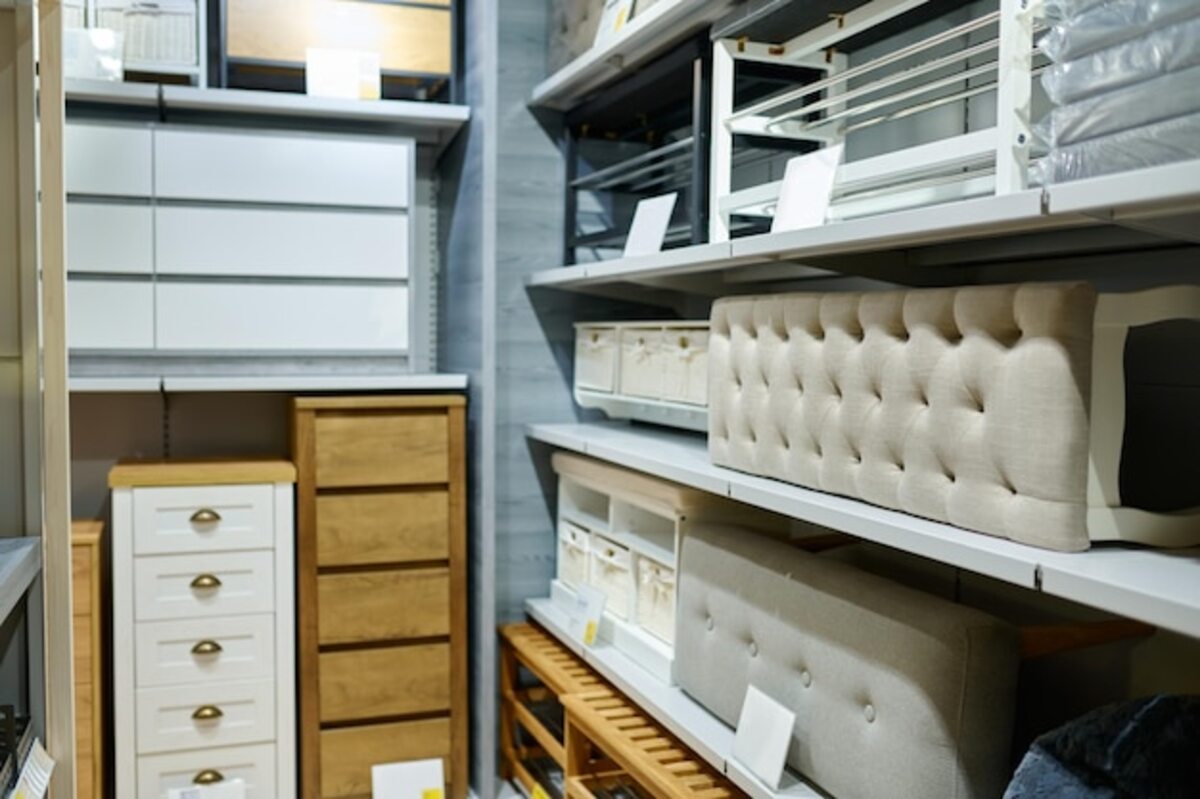Errors when not considering the available space in your home

When embarking on the process of buying a new home, one of the most common mistakes is not adequately considering the available space. This oversight can lead to unfortunate decisions that affect your quality of life and the functionality of the environment. In this article, we will explore how proper space planning not only optimizes your investment but also transforms your home into a comfortable and welcoming place. Discover why measuring each corner well is key to avoiding future regrets.
1. The importance of measuring before buying
The importance of measuring before buying cannot be underestimated, as a common mistake when purchasing furniture or appliances is not taking into account the dimensions of the available space. Every corner of your home has its particularities and limitations, and what seems like an excellent option in the store may not fit properly in your living room, kitchen, or bedroom. Taking the time to measure accurately will help you avoid unpleasant surprises at the time of delivery, such as a sofa not fitting through the door or a bookshelf taking up more space than imagined, compromising the flow and functionality of the area. Furthermore, measuring before buying also helps to better visualize how the new elements will integrate into your home. By knowing the exact measurements, you can experiment with different configurations and styles without risking overcrowding a space with disproportionate or impractical pieces. This is especially important in small homes, where every centimeter counts and proper planning can make an area feel more spacious and welcoming. In summary, taking the time to measure and plan before making any purchase is an investment in comfort and harmony for your home.
2. Small spaces: how to maximize every square meter
Living in a small space means every square meter counts, and the key to maximizing it lies in smart planning. It is essential to evaluate how the available spaces are used before making decisions about furniture and decoration. Choosing multifunctional pieces, such as a sofa bed or an extendable table, can transform a limited area into a versatile environment that adapts to your daily needs. Furthermore, using vertical storage solutions, such as tall shelves and built-in cabinets, helps to free up floor space and keep clutter under control, thus creating a sense of spaciousness.
Another crucial aspect is the proper use of lighting and colors. Light tones on walls and furniture can make a small room appear larger and brighter. Additionally, maximizing natural light through light curtains or strategically placed mirrors can significantly contribute to the perception of space. By implementing these simple yet effective strategies, you will not only optimize your home but also enhance your overall well-being by creating a cozy and functional environment where every corner has its purpose.
3. Common mistakes when choosing furniture without considering dimensions
When choosing furniture for your home, one of the most common mistakes is not paying attention to the dimensions of the available spaces. Often, the excitement of acquiring a new sofa or an elegant dining table can lead you to overlook the actual size of the area where they will be placed. This oversight can result in furniture that does not fit properly, creating a cluttered or uncomfortable environment. An oversized sofa can make a small living room feel even narrower, while a tiny table might get lost in a spacious and empty dining room.
Additionally, the inappropriate choice of dimensions not only affects the aesthetics of the space but also its functionality. Imagine trying to move around an excessively bulky table in a compact kitchen; this can hinder daily tasks and create constant frustrations. On the other hand, opting for furniture that is too small in spacious areas can result in an unbalanced and unwelcoming design. To avoid these unfavorable scenarios, it is essential to measure every corner accurately before making any purchases, ensuring that each piece of furniture not only fits the physical space but also contributes to a harmonious and pleasant home experience.
4. The relationship between space and lifestyle
When considering the relationship between space and our lifestyle, it is essential to reflect on how each room and area of our home aligns with our daily activities. A home should not only be a physical refuge but also a reflection of our needs and habits. If we choose a space that does not adapt to our lifestyle, we may find ourselves limited in our family or social interactions. For example, a small kitchen can make it difficult to prepare meals for family gatherings, while a cluttered living room can make visits uncomfortable and unenjoyable. Therefore, carefully thinking about how we want to live is crucial for choosing the right space.
Furthermore, space planning directly influences our emotional well-being. A well-designed and organized environment can promote relaxation and productivity, while a cluttered or poorly arranged space can cause stress and frustration. By assessing our daily needs –such as working from home, family time, or recreational activities– ensuring that each area serves a specific function can significantly enhance our quality of life. In summary, understanding the relationship between the available space and our lifestyle helps us create a home where every corner contributes to our overall well-being and personal satisfaction.
5. Consequences of ignoring the available space in the kitchen
Ignoring the available space in the kitchen can have significant consequences that go beyond simply being unable to accommodate all the utensils and appliances. Lack of proper planning can result in a disorganized and chaotic environment, where every activity becomes a challenge. Cooking, for example, becomes less efficient when workspaces are insufficient or poorly distributed, which can lead to greater daily frustration. Additionally, a cluttered kitchen can compromise safety by increasing the risk of accidents, such as spills or falls due to a lack of space to move comfortably. On the other hand, ignoring space also affects the aesthetics and comfort of the home. A kitchen that does not respect the proper proportions can seem even smaller and more uncomfortable, which directly impacts how you feel when using it. If the design does not allow for good circulation or if the furniture is too tightly arranged, you may feel overwhelmed even before you start preparing a meal. Ultimately, this could make you avoid cooking at home, which not only limits your food options but also affects your overall well-being and family habits. Therefore, it is crucial to take the time to assess the available space and design a functional kitchen that fits your needs and lifestyle.
6. How messy rooms affect your well-being
Cluttered rooms can have a significant impact on your emotional and mental well-being. A crowded space not only hinders mobility but can also create a sense of overwhelm and stress. When you are surrounded by unnecessary objects and chaos, you are more likely to feel distracted and less productive. This lack of order can affect your ability to relax in your home, turning a place that should be a refuge into a source of unease. Moreover, clutter can negatively influence your interpersonal relationships. Unexpected visits can become a source of anxiety if you feel your home is not presentable. This feeling can lead to avoiding inviting friends or family, limiting your social life and affecting your emotional connections. By properly considering the available space when designing or reorganizing your rooms, you can create more harmonious environments that promote calm and pleasant coexistence, thus improving your overall quality of life.
7. Storage planning: a vital aspect
Storage planning is a vital aspect that is often overlooked when acquiring or redecorating a home. It is essential to consider not only the amount of physical space available but also how to effectively organize that space. The lack of a clear storage strategy can result in cluttered and non-functional environments, negatively impacting daily quality of life. By designing an intelligent storage system, it is possible to maximize every corner of the home, ensuring that items are easily accessible and that the space is free of clutter.
Additionally, proper storage planning allows for the customization of each area of the home according to the specific needs of its inhabitants. From creative solutions for small spaces to adaptable modular systems, there are endless options that can become perfect allies for optimizing the available space. Investing time in analyzing storage possibilities not only enhances the overall aesthetics of the home but also helps create a more relaxing and harmonious environment. Ultimately, integrating this consideration from the beginning will help you avoid future regrets and fully enjoy your new home.
8. Decorative elements that can overwhelm the space
When decorating a home, it is common to get carried away by the excitement of choosing elements that reflect our personal style. However, the accumulation of decorations can overwhelm the available space, making rooms feel cluttered and uninviting. For example, a wall full of pictures or shelves packed with decorative items can detract attention from the main furniture and create a sense of visual chaos. It is essential to remember that less is more; carefully selecting a few meaningful pieces not only enhances the home's aesthetic but also allows for breathing room in each environment.
Another aspect to consider is the sizes and proportions of the chosen decorative elements. Choosing accessories that are too large in small spaces or tiny items in large areas can create a negative impact on the perception of the space. It is advisable to create a visual balance by combining different sizes and textures, which not only enhances the harmony of the environment but also maximizes its functionality. Instead of cluttering every corner with decorations, focus on highlighting architectural features or specific focal points, thus leaving enough space to move around and fully enjoy your home.
9. The role of interior design in space optimization
Interior design plays a fundamental role in optimizing the available space in your home. By carefully considering how to arrange furniture and choosing the right decorative elements, it is possible to maximize every corner without sacrificing style or functionality. Good planning allows for the creation of multifunctional areas that adapt to the needs of their inhabitants, transforming small spaces into cozy and efficient environments. For example, the use of modular furniture or integrated storage solutions can free up visual and physical space, avoiding the feeling of overwhelm.
Additionally, interior design is not just about aesthetics; it also influences the perception of space. Light colors and appropriate lighting can make a room appear larger and brighter. The strategic arrangement of furniture can facilitate natural flow within the home and encourage more pleasant social interactions. In summary, investing time in good interior design not only prevents mistakes related to inefficient use of space but also enhances quality of life by creating an adaptable and harmonious environment.
10. Practical tips for better visualizing available spaces
To better visualize the available spaces in your home, it is essential to adopt a practical and organized mindset. One of the most effective strategies is to create a scaled plan of the space you wish to furnish or decorate. You can use graph paper or digital applications, where you can draw the arrangement of the furniture and other elements. This exercise will give you a clear idea of how each area will look with different configurations, avoiding unpleasant surprises at the time of purchase or installation. Additionally, remember to consider the flow of movement; ensure that there is enough space to walk and that the furniture does not obstruct access to doors and windows.
Another practical tip is to use adhesive tape to mark on the floor the dimensions of the furniture you plan to acquire. This will give you a tangible visual representation of the space they will occupy and help you assess whether they truly fit well in your home. You can also experiment with different combinations of colors or textures using physical samples before making final decisions about paint, upholstery, or decorative accessories. By taking the time to visualize and plan properly, you will not only avoid costly mistakes but also achieve a harmonious environment that reflects your personal style and meets your daily needs.



